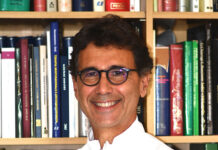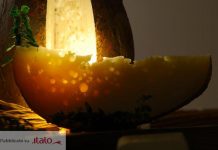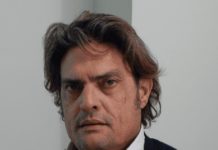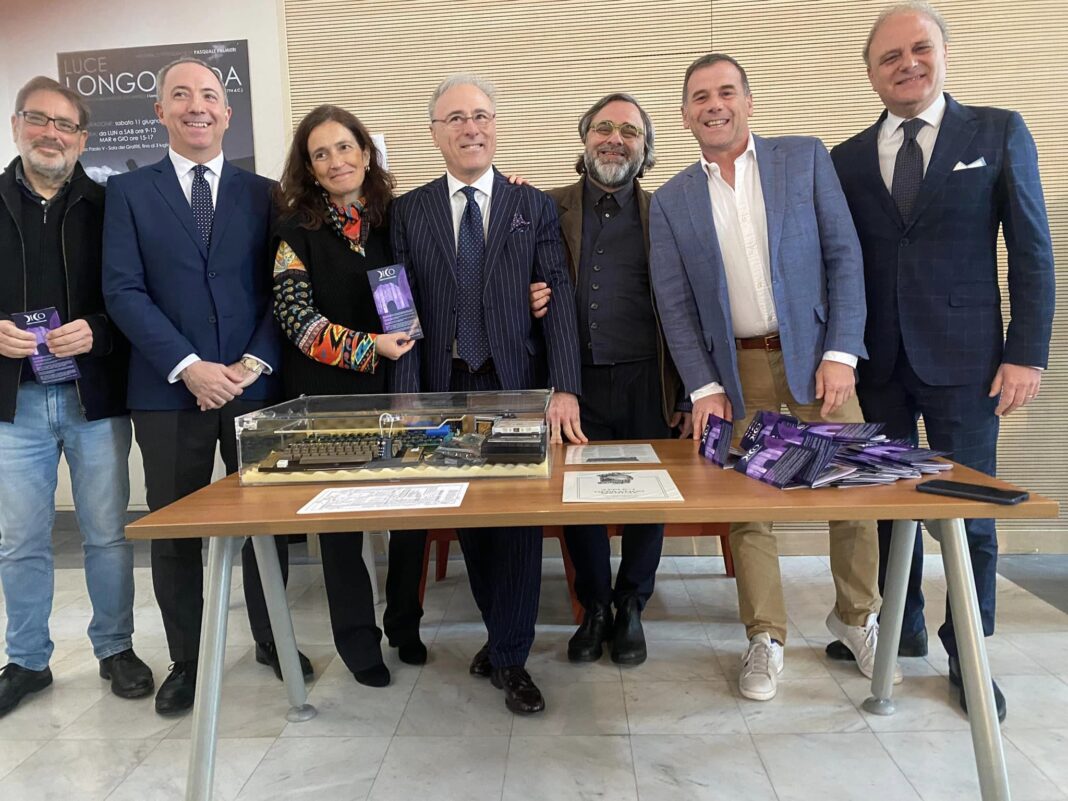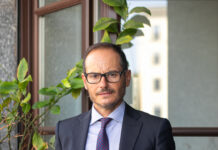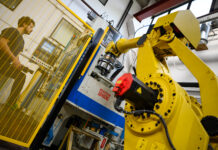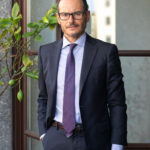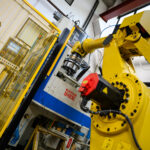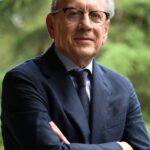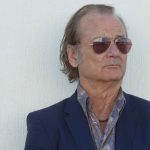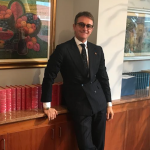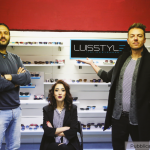With the ambitious goal of giving new vitality to Sannio, collaborating in the cultural and artistic growth of an area rich in history, DiCo (www.saichetidico.art) was founded, an association that aims to enhance the economic, social, cultural, entrepreneurial, artistic, and historical potential of a land that aspires to compete on a global level, as Francesco Cascino, Ninni De Santis, and Fabrizio D’Aloia, the founding fathers of this all-Sanniti excellence, explain in this long interview.

Dr. Cascino, when was the DiCo Association established? Who are the founders of this new reality?
DiCo – Digital & Contemporary Art was born in December 2023 from the union of three professionals, two of whom, Cascino and D’Aloia, have been involved in contemporary art for over 25 years. Pellegrino De Santis, Ninni for everyone, is the President of DiCo: an engineer, entrepreneur, expert in Industry 4.0 but always passionate about culture linked to business development. Former President of Giovani and Vice-President of Confindustria Campania, and currently Vice-President of ABIE (the Blockchain association of Confindustria), he has always been attentive to the hybridisation of culture and business, which, in reality, is nothing other than the Olivetti model applied not only to businesses but also to cities understood as the fabric of social and professional relations. Fabrizio D’Aloia, Vice Chairman of DiCo, also from Benevento, an electronic engineer, is a serial entrepreneur in the context of digital research and art using digital media. Also an advisor in ABIE, he is founder of ArtSquare, the first contemporary art exchange and partner of Eterna Capital Fondo, focused on Blockchain technology. He is a technology & future evangelist as well as a yachtsman, traveller and eclectic art and technology collector. And then there is me, Francesco Cascino, DiCo’s Artistic Director; I operate as an Art Consultant, i.e. a contemporary art collection design consultant and Art Thinking Oriented Curator, i.e. a creator and artistic director of cultural design through both the devices of art and the grafting of artists into urban, entrepreneurial and public art processes linked to territorial development. The idea was born a couple of years ago in a chance meeting between the two Samnites in Pimlico in the heart of London evolving with innovation and art. From that meeting emerged the desire to enrich Benevento and Sannio with new-generation cultural palimpsests that would enhance the existing heritage and create new ones.
Ing. De Santis, what are DiCo’s aims and objectives?
Starting from the methods of Art Thinking and public art that generate identity, aggregation, and new territorial attractors, first of all for the citizens of Benevento, but also for attentive and curious visitors, as well as investors, we will call on artists and professionals to discover and bring out new values through the various languages of art, and we will involve the entire social, entrepreneurial, commercial and political fabric in permanent and temporary operations of participatory cultural design with a high rate of social and economic innovation, as they have been doing for 20 years now in evolved contexts around the world, which are, however, much less seductive and interesting than Sannio. We must not have the complexes that the institutions have stopped the development of the South, which today is instead a destination for intelligent people who rediscover the need for authenticity and welcome. If we look at the examples of public art and integrated cultural districts around the world, we find that they produce double-digit GDP increases, new jobs, and new economies. All through the poetry of the arts that stimulate intelligence, identity and vision.
How do you intend to enhance the Sanniti territory and identity?
We know what we could do, but we want to elaborate and refine our ideas with citizens, politicians, entrepreneurs and all the players in the area, starting with young people and artisans. Naturally, our proposals have as their first interlocutor the municipality and the province, which have shared our proposals with extreme and rare participation. Listening and responding between culture and politics in Benevento once again stimulates the imagination that has built the thousand-year-old cities of art beloved throughout the world: the Council sees the perfect relationship between art, politics and development that they do not see in other places. Starting with the Mayor Clemente Mastella and councillors Antonella Tartaglia Polcini, Luigi Ambrosone, Molly Chiusolo and Attilio Cappa, and the President of the Province Nino Lombardi. Public art is culture, but it is also entrepreneurial development, just as it is city design, nourishment of evolutionary knowledge for citizens and attraction of a target of high-spending visitors. So we will work as a team with those who care about the daily growth of the territory, without categories or fences.
Mr D’Aloia, what projects have been implemented to date? And what are the future goals?
We have just been established as DiCo (whose name refers to the fact that everyone has a say), but many important projects have been realised. We are, for example, launching a co-project for the restoration and enhancement of the public work Crib by Riccardo Dalisi with the municipality, and of two works by Atelier Van Lieshout with the Province of Benevento. For the future, we will propose the creation of temporary and permanent cultural palimpsests, including the use of two museum spaces as spaces for the expression of the arts and incubators of new professional opportunities; all with the help of artists who are able to understand the aptitudes of the territory and involve local craftsmen and peculiarities to make them cultural and identity symbols. We will co-design and realise new public art of the highest philosophical quality that mirrors the community and in front of which daily collective and connective aggregation and reflection is generated, as well as a high-profile cultural attraction for travellers and investors from all over the world. Art serves to help citizens and their children grow, tourism comes next, and with a cultured city, much more fertile and productive tourism is generated.
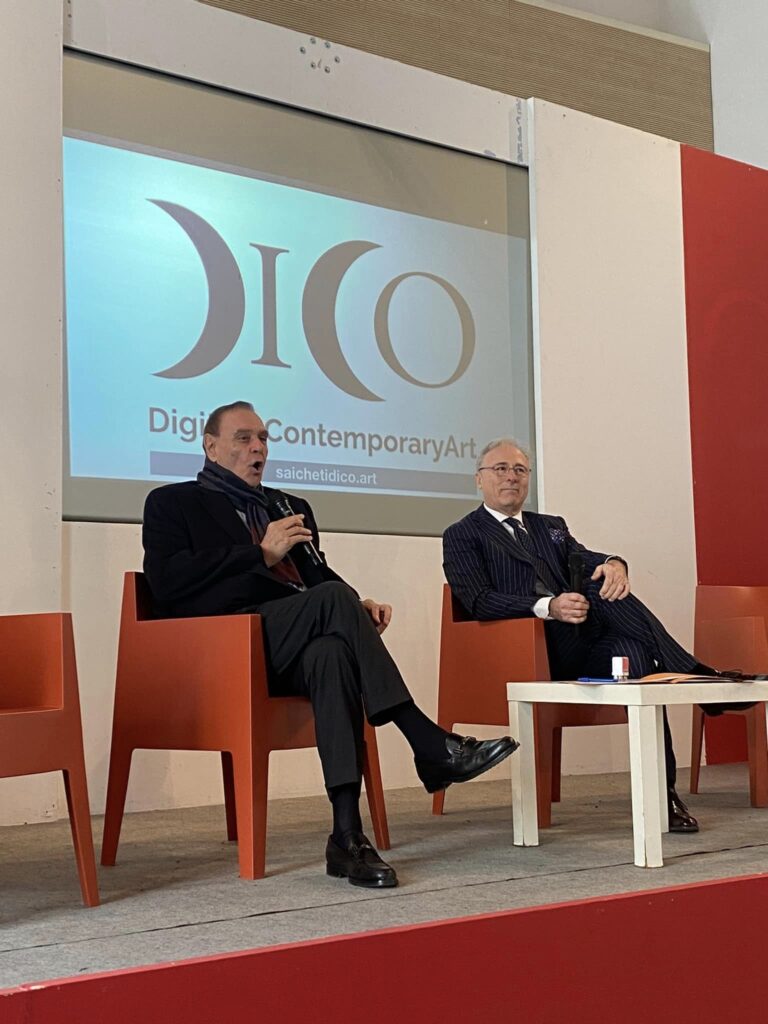
Mayor Mastella, how do you welcome this initiative?
With favour and enthusiasm! Pellegrino De Santis and Fabrizio D’Aloia with DiCo are embarking on a form of enlightened patronage that we immediately nurtured: they will restore Riccardo Dalisi’s Nativity Scene, which was purchased by administrations prior to mine but had ended up in oblivion. We are investing a great deal in the culture and beauty of Benevento: we have illuminated the city’s main monuments, with funds from a European programme we have enhanced the areas near the most interesting sites such as the Longobard Walls and the Arch of Trajan, and we have revitalised the Diocesan Museum. A few days ago I was with Minister Sangiuliano: Benevento will have the most important Egyptian Museum in southern Italy. If the work of the institutions, which naturally have limited funds and cannot do everything, is flanked by that of generous entrepreneurs who donate to the city and that of enthusiasts with skills and means, then we can really achieve important results and make culture and tourism the real industries of the city.



















